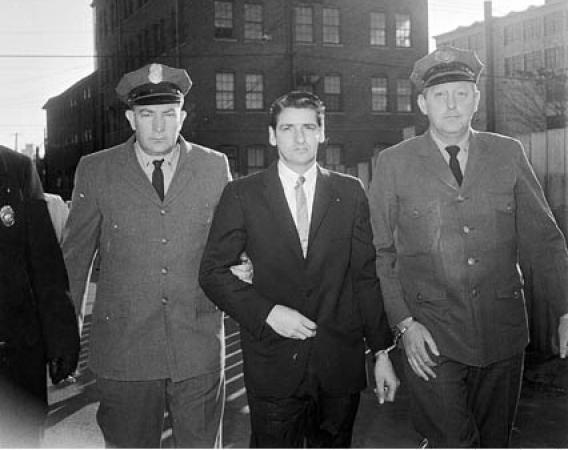In 2001 DNA Evidence Didn’t Point to Albert DeSalvo as the Boston Strangler. New DNA Tests Do. What Gives?

Federal Bureau of Investigation, via Wikimedia Commons
Crime is Slate’s crime blog. Like us on Facebook, and follow us on Twitter @slatecrime.
On Thursday morning Boston prosecutors announced they had found a familial DNA match connecting the long-dead Albert DeSalvo with the 1964 murder of Mary Sullivan. Almost 50 years ago, DeSalvo confessed to being the Boston Strangler, the serial killer suspected of sexually assaulting and killing Sullivan and 10 other women in the Boston area during the early 1960s—but there was no physical evidence connecting him to the crimes. Recently Boston authorities retrieved a water bottle discarded by one of DeSalvo’s nephews, and compared the DNA from the bottle with 50-year-old forensic evidence that had been preserved from the Sullivan crime scene. Now, a judge has ruled that authorities can exhume DeSalvo’s corpse to see if further testing might directly connect DeSalvo with Sullivan’s murder.
The lack of hard evidence connecting DeSalvo to the crimes has led many to question whether he was actually responsible for the Strangler murders. (The Sullivan case is the only one of the Strangler murders in which physical evidence remains.) Susan Kelly, author of a book on the crimes, once told CBS that “it's very interesting to me that the details that Albert got wrong in his confession were identical to the details that the newspapers got wrong.” And in 2012 former Massachusetts Attorney General Edward Brooke told the Boston Globe that “Even to this day, I can’t say with certainty that the person who ultimately was designated as the Boston Strangler was the Boston Strangler.”
This isn’t the first time that authorities have used DNA testing to try and link DeSalvo with the Strangler crimes. In 2001 a team of forensic investigators took a mitochondrial DNA sample from Albert DeSalvo’s brother, Richard DeSalvo, and tested it against DNA samples extracted from a dried, semenlike liquid found entangled in the pubic hair of Mary Sullivan’s exhumed body. The samples didn’t match. “We couldn't find anything on the remains that was consistent with Albert DeSalvo, DNA-wise,” recalls Dr. David Foran, a forensic scientist who directed the DNA team that analyzed the 2001 samples.
So, did DeSalvo do it or not? “Our results didn't point to guilt,” Foran tells me. “Other people would take those results and say, ‘Well, that means he's innocent.’ But those are different things.”
The discrepancy between the 2001 results and today’s announced match might come down to the different samples analyzed by the different labs. “What [the 2013 investigators] have are slides from the crime scene that have semen on them, presumably from the perpetrator,” says Foran, whereas his team examined samples taken from Sullivan’s exhumed corpse. “One thing that confuses me is why they didn't test those 15 years ago, because they could have. And we certainly did ask for them back then.” Add that to the long, long list of questions about the Boston Strangler case that might never get answered.

